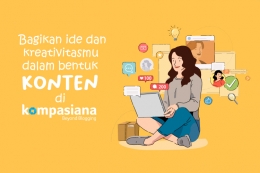Have you ever felt that when it comes to reading comprehension and the tasks are not similar to what we have every day, your students claim that it is too difficult to handle? It is a normal reaction because most reading comprehension activities are designed within the LOTS (Lower Order Thinking Skills) and MOTS (Medium Order Thinking Skills), and those in-depth questions are in the HOTS (Higher Order Thinking Skills) level. Today, I would like to invite you to help improve your learners' reading comprehension through HOTS.
You may wonder what is HOTS, LOTS, and MOTS. The concepts of HOTS and LOTS, and MOTS are taken from the taxonomy of Benjamin Bloom in 1956 and revised by Anderson and Krathwohl in 2001. By definition, Bloom's taxonomy is a framework used to classify educational goals by categorizing levels of complexity and specificity in learning objectives. Bloom's taxonomy is divided into six major categories, each representing a different level of cognitive skill: Remembering, understanding, applying, analyzing, evaluating, and creating (Krathwohl, 1973). LOTS is developed through the first 3 levels within Bloom's taxonomy, which are remembering, understanding, and applying. HOTS involves analysis, evaluation, synthesis, and creativity, and MOTS is the concepts bridging the gaps between HOTS and LOTS which involve comparing, contrasting, organizing, and summarizing skills.
What can we do then as a teachers to help our learners improve their reading comprehension through HOTS?
First of all, before we can help our students develop their HOTS i reading comprehension, we should make sure that they have a good foundation in basic understanding (Surtantini, 2019). It means learning new words, decoding skills, finding main ideas, and supporting facts. In-depth training in cognitive techniques will help students figure out their strengths and weaknesses in higher-order thought and their ways of thinking (Thomas & Thorne, 2010). As readers, they need more focused ways to interact with books. This means that improving background knowledge and vocabulary will only help to some degree with reading comprehension (Elleman & Oslund, 2019). Students can improve their comprehension by learning how to check their own understanding and use different reading strategies. Getting students to interact with the text by making notes, asking questions, and reviewing helps them learn more and think more critically, which strengthens their connection to the material (Roberts & Roberts, 2008).
Second, we should focus on teaching students how to look at, evaluate, and put together information from books. Instead of just remembering facts, we should train learners to conclude, make assumptions, and think critically about the author's point of view and goal). Students are encouraged to question their beliefs, look into different points of view, and take part in thoughtful discussion through well-thought-out activities and homework. This improves their ability to think critically and analyze information. Students need to be able to voice their views and question assumptions in order to develop these skills (Okasha, 2021). As guides, we can help our students stay on track, understand the details of what they're reading, and look into interesting sidetracks. All of these things help students understand what they're reading (Duke et al., 2011).
Last but not least, if we want our learners to improve their reading comprehension, they need to be in a school environment that pushes them to participate and think critically. Schools should encourage students to look at things from different points of view, question what they think they know, and ask questions (Arifin, 2020). This can be done in several ways, such as through open-ended discussions, arguments, and group projects that require students to evaluate and combine information from different sources.
Through these steps, let's try to implement this in our classroom and bring the best for our learners.
References
Arifin, S. (2020). The Role of Critical Reading to Promote Students' Critical Thinking and Reading Comprehension. Jurnal Pendidikan Dan Pengajaran, 53(3), 318. https://doi.org/10.23887/JPP.V53I3.29210
Duke, N., Pearson, D., Strachan, S., & Billman, A. (2011). Essential Elements of Fostering and Teaching Reading Comprehension. What Research Has to Say About Reading Instruction, 51--93. https://doi.org/10.1598/0829.03
Krathwohl, D. R. (1973). Taxonomy of educational objectives. Affective Domain.








